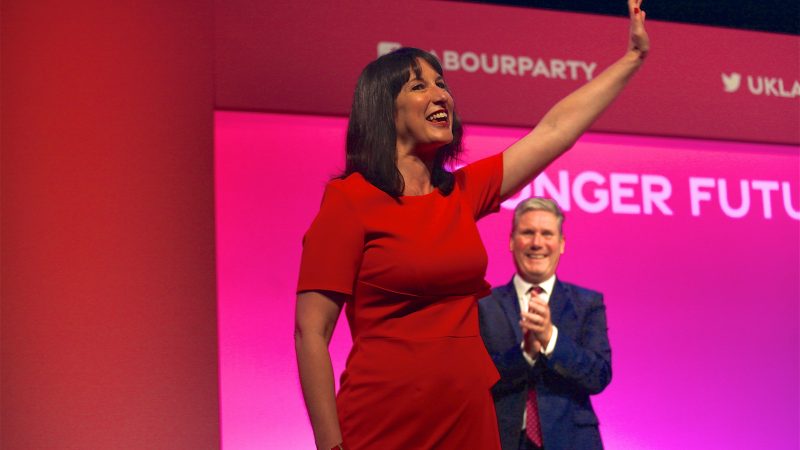
The Conservative leadership contest has shown the Tories’ traditionally reckless and dishonest approach to the public finances. It began with a total focus on one thing only: tax cuts. Yet neither contender has been candid about the implications of their tax promises for public spending, government borrowing and national debt.
Instead, both have become characters in a political Fantasia; two sorcerer’s apprentices unable to stem the flow of fresh tax-cutting commitments from their respective campaigns, unbothered by the damage that the associated public spending cuts would do to the country – social care, the NHS, schools etc – or by the threat that unfunded spending pledges would pose to Britain’s public finances.
Liz Truss’s opening bid envisaged £30bn plus of tax cuts, quickly hiked up to over £80bn in more proposals for tax cuts and spending increases, blithely ignoring Andy King of the Office for Budget Responsibility (OBR) who contradicted her claims that tax cuts pay for themselves through faster economic growth.
Rishi Sunak’s slide down the slippery slope of Tory expectations has led him to all sorts of promises, including expanding grammar schools with no thought about the impact upon comprehensives, especially in ‘levelling up’ communities, and with unclear consequences for the public accounts. Who knows what new or old ideas the two Tory rivals may be about to promote from the pending to the spending file.
We’ve been here before. The Tory approach to the 2010 election was equally misleading. They pledged to slash taxes while keeping quiet about the true scale of the public spending cuts that would be required to keep the public finances on a sustainable basis. The OBR now reckons that ten years of Tory austerity under Chancellors George Osborne and Philip Hammond saw £170bn in public spending cuts in today’s terms. (They also raised taxes by nearly £40bn – so much for Tory promises to cut tax).
They never even came close to hitting their government borrowing and debt targets. What they did do is bring UK economic growth to a shuddering stop within two years, with pathetically slow growth in GDP and in real earnings for the disastrous following decade.
Paul Johnson of the Institute for Fiscal Studies (IFS) recently illustrated the dilemma facing the government, using OBR projections of public spending up to 2070. His “graph of doom” shows a steadily rising share of public spending devoted to health, social care and pensioner benefits over the next 50 years and a correspondingly sinking share available for all other public spending purposes. Tax cuts would only make choosing priorities for public spending even more difficult and painful.
And the stark choice pictured in the IFS graph of doom reflects an underlying artificial assumption that total public spending accounts for a fixed 40% share of national income from now until 2070. Much better to expand the role of the state by devoting a bigger share of national income to public services, pay for them from higher but fairer taxes and use economic and industrial policy to encourage the economy to grow – so that politics revolves around fairer shares in a bigger cake. Other countries combine higher taxes with faster economic growth than Britain. The key is achieving growth.
This is where I especially welcome the approach adopted by Shadow Chancellor Rachel Reeves. Her emphasis on promoting growth, most notably her commitment to a climate investment pledge worth £28bn a year until 2030, should boost much needed public and private investment, including in the steel industry.
I hope she won’t mind my offering one qualification. Labour’s focus on public capital expenditure and commitment to ‘borrow only to invest’ risk understating the significance of public current spending. George Osborne’s 2010 emergency Budget cut public investment plans by £2bn – but it cut current public spending plans by £30bn. He set the pattern for a decade. It was those cuts in current spending that led to the loss of 20,000 police jobs, other key public sector job losses like nurses and teachers and deep cuts in public services.
Rachel’s emphasis on growth, however, is vital. The recent OBR finding that UK net debt is on an “unsustainable path” due to government borrowing rising from 5% of GDP in 2021 to 20% by 2071 has to be taken seriously, as must its entire assessment of the UK’s long term prospects. Yet all the OBR projections are based on the assumption that UK real GDP only grows at 1.4% per year, due to a woefully slow annual increase in labour productivity. Brexit is assumed to reduce Britain’s already abysmally low productivity by 4% over 15 years. A successful Labour pro-growth, economic and industrial policy could transform all the OBR figures.
Finally, I like Rachel’s interest in what US Treasury Secretary Janet Yellen calls ‘modern supply-side economics’. I hope the Shadow Chancellor can find time for some modern Keynesian economics, too. That would really transform both Britain’s and Labour’s prospects.




More from LabourList
Mainstream announce recommendations for NEC candidates
‘Africa must be the UK’s top foreign policy priority in 2026’
‘Standing up to power is not optional when politically uncomfortable. It’s essential’